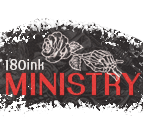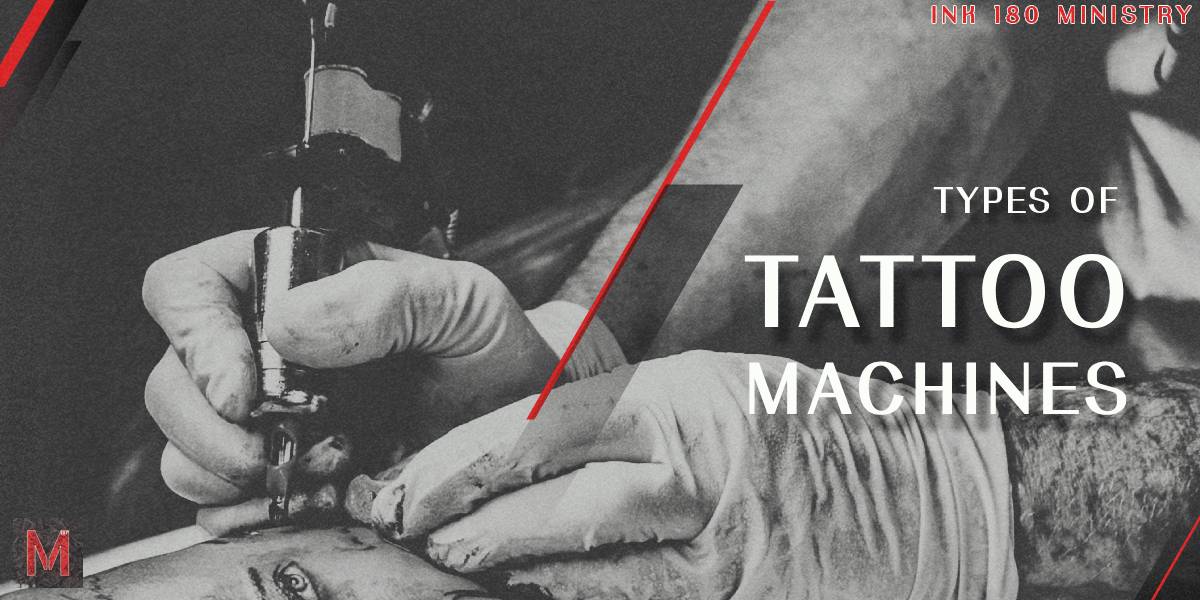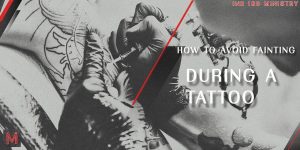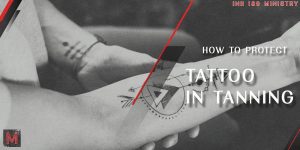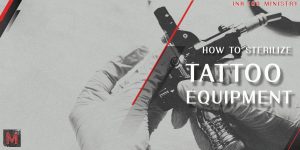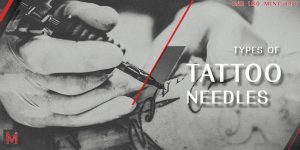Experienced tattoo masters know that the final result (beautiful and high-quality tattoo) depends on many factors. Beginners believe that to achieve it is enough to have a beautiful sketch and certain skills. But it is not that so. One important aspect that often goes unnoticed is the choice of tattoo machines. There are two primary types of tattoo machines, and understanding how these principles work is essential when selecting your first “ink gun.”
In this article, we’ll explore the differences between rotary and coil tattoo machine types, and I will help you make an informed choice so that you can do your work not only in a quality and safe way for the client but you can also enjoy your work.
Classic tattoo machine types
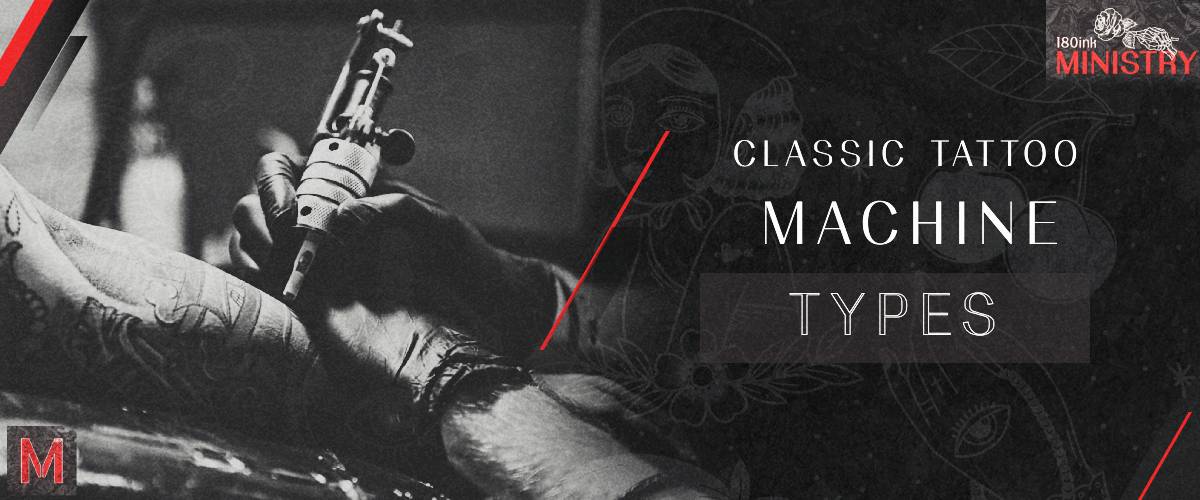
The ongoing debate of coil vs rotary tattoo machines continues to shape the industry, as tattoo artists and enthusiasts alike weigh the pros and cons of each option. To understand this issue in more detail, I will share with you how these tattoo machines work in this section.
Coil tattoo machines
Coil tattoo machines have been a staple in the tattoo industry for decades, known for their reliability and precision. These devices operate on electromagnetic coils that drive a reciprocating armature bar. When power is applied, the coils create a magnetic field, pulling the armature bar down, which, in turn, drives the tattoo needle into the skin. The anatomy of this tattoo machine consists of several key components, including coils, an armature bar, contact screws, front and rear springs, a frame, and a grip. The coils are usually wrapped with copper wire and serve as the machine’s power source.
In order to make it easier for you to understand the advantages and disadvantages of these models, I have prepared a special table:
| Advantages | Coil machines are known for their versatility and precision. They excel in creating bold outlines and intricate details, making them a preferred choice for traditional and fine-line tattooing. |
| Disadvantages | They tend to be heavier and noisier than rotary machines. They require more maintenance due to their mechanical complexity. |
| Maintenance | Maintaining a coil machine involves regular cleaning, lubrication, and tuning of components like the springs and contact screws. This ensures consistent performance and minimizes the risk of overheating. |
Rotary tattoo machine
In recent years, new-style tattoo guns in the form of rotary tattoo machines have gained popularity among tattoo masters due to their efficiency and ease of use.
Rotary machines operate on a rotary mechanism powered by an electric motor. The motor drives an eccentric cam that moves the needle up and down in a continuous, rotating motion. Such devices are typically simpler in structure compared to coil machines. They consist of a grip, motor, cam system, and needle assembly. This simplicity makes them lighter and easier to handle.
| Advantages | They are known for their quiet operation and reduced vibration. These models are versatile and suitable for both lining and shading. Additionally, they require less maintenance compared to coil machines. |
| Disadvantages | Some artists find it challenging to achieve the same level of precision as with coil machines. It may take time to adjust to the different feel and technique. |
| Maintenance | Regular cleaning, lubrication of the motor, and ensuring the cam system is correctly aligned is essential. This helps maintain consistent performance and prolong the machine’s lifespan. |
Pen-type tattoo guns
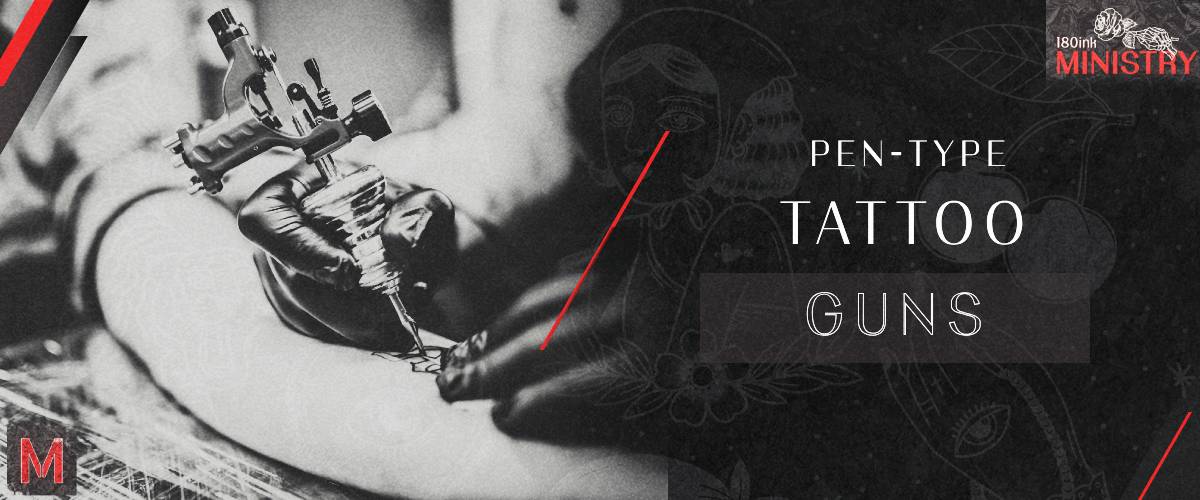
These machines utilize a rotary motor to move the needle up and down and are known for their wireless operation through built-in rechargeable batteries. Pen-type tattoo machines work on the same basic principle as rotary machines, utilizing a rotary motor to drive the needle cartridge in an up-and-down motion. The motor is powered by a built-in rechargeable battery, eliminating the need for a wired connection.
The structure of pen-type tattoo guns is sleek and straightforward. They typically consist of a grip, a motor, a needle cartridge, and a power supply unit. The needle cartridge is easily replaceable, allowing for quick and hygienic changes.
| Advantages | They are lightweight and ergonomically designed, reducing artist fatigue during long sessions. Their wireless operation provides freedom of movement, and the replaceable needle cartridges ensure hygiene and efficiency. |
| Disadvantages | Some artists may find it challenging to achieve precise control and depth with pen-type machines, especially for intricate work. Additionally, the initial investment cost can be higher than traditional machines. |
| Maintenance | You should regularly clean the motor, charge the battery, and replace the needle cartridges. |
As you can see, there are different tattoo guns available today. Each type has its advantages and disadvantages, so they are suitable for different styles and preferences. Therefore, I recommend you have several tattoo machines that you can use depending on the complexity of the sketch.
